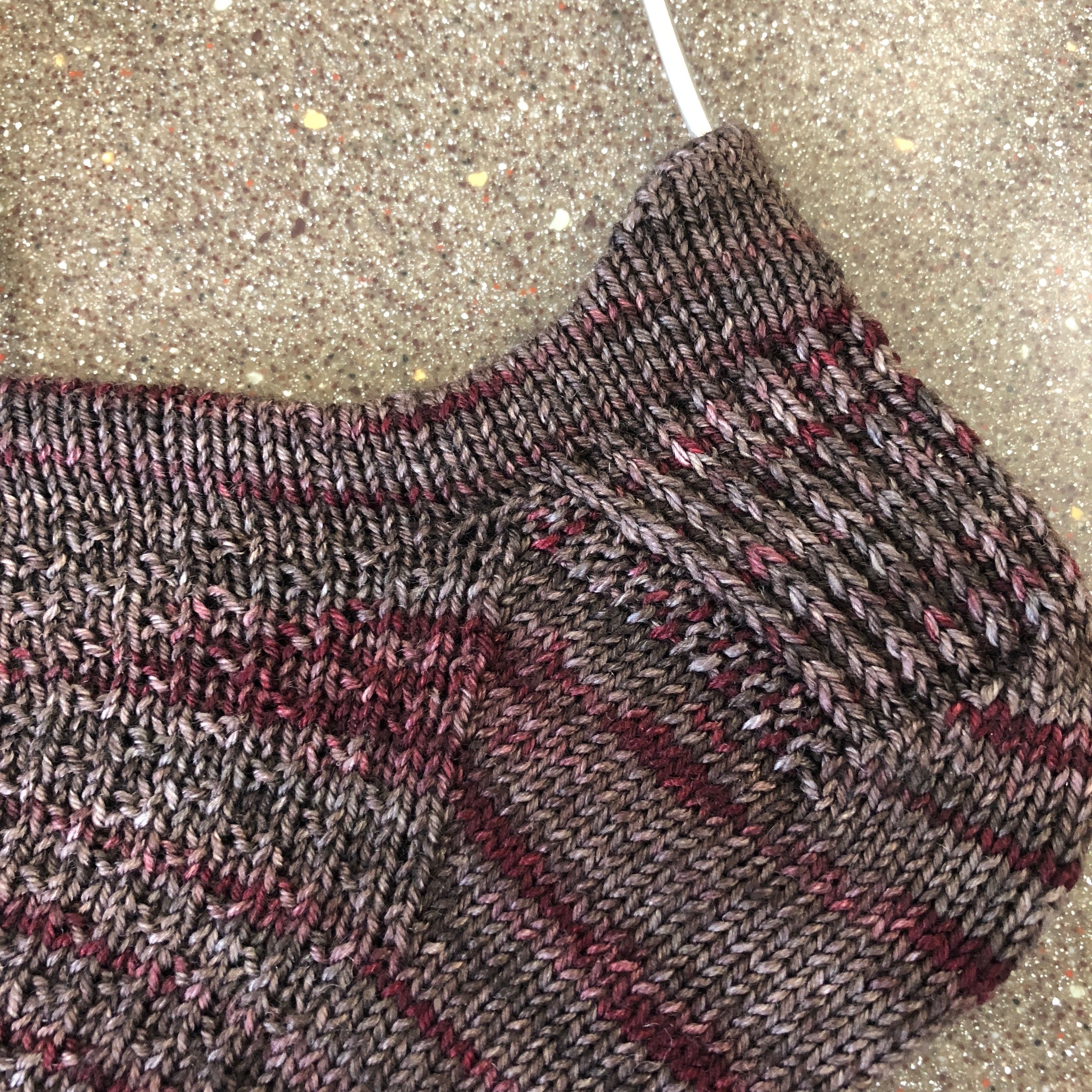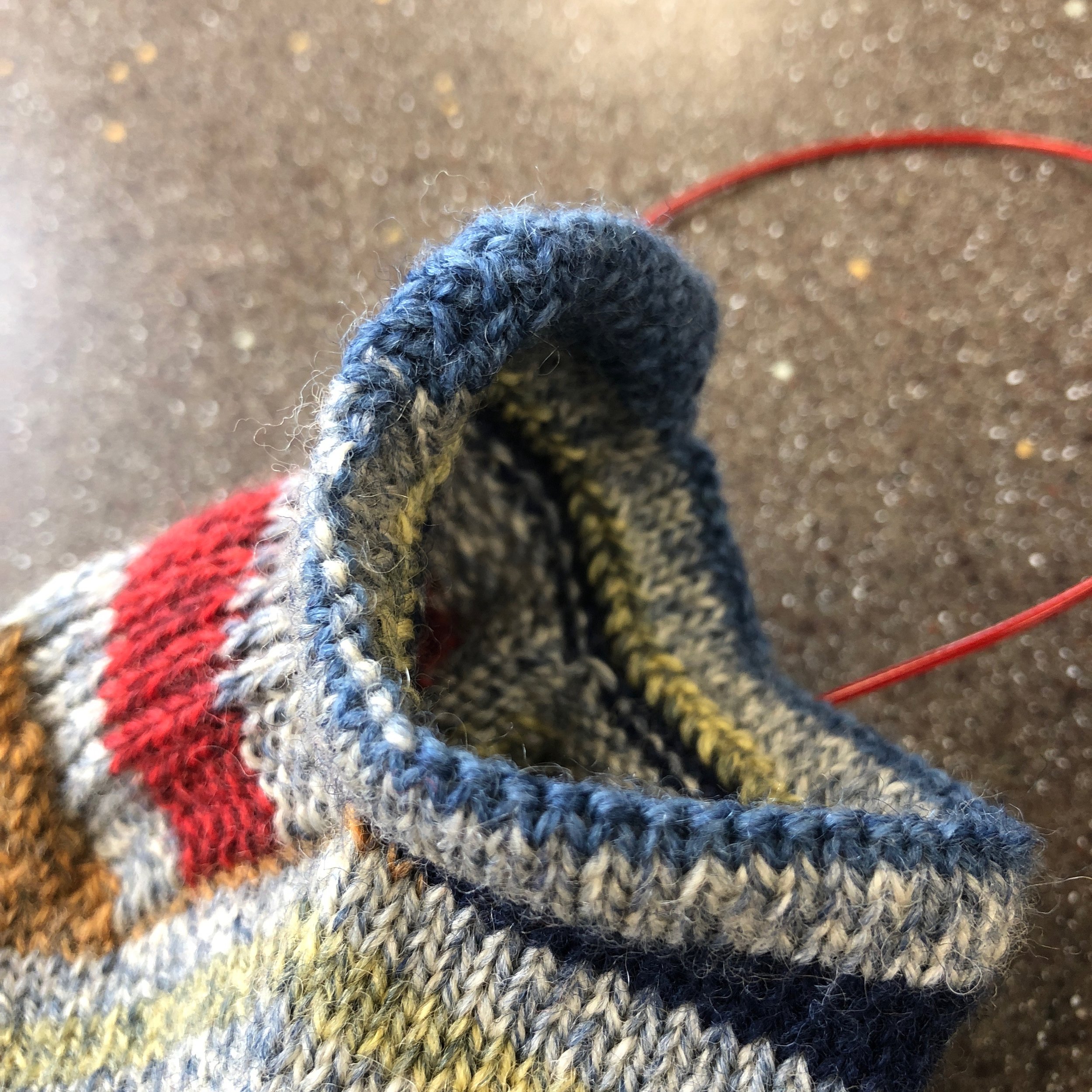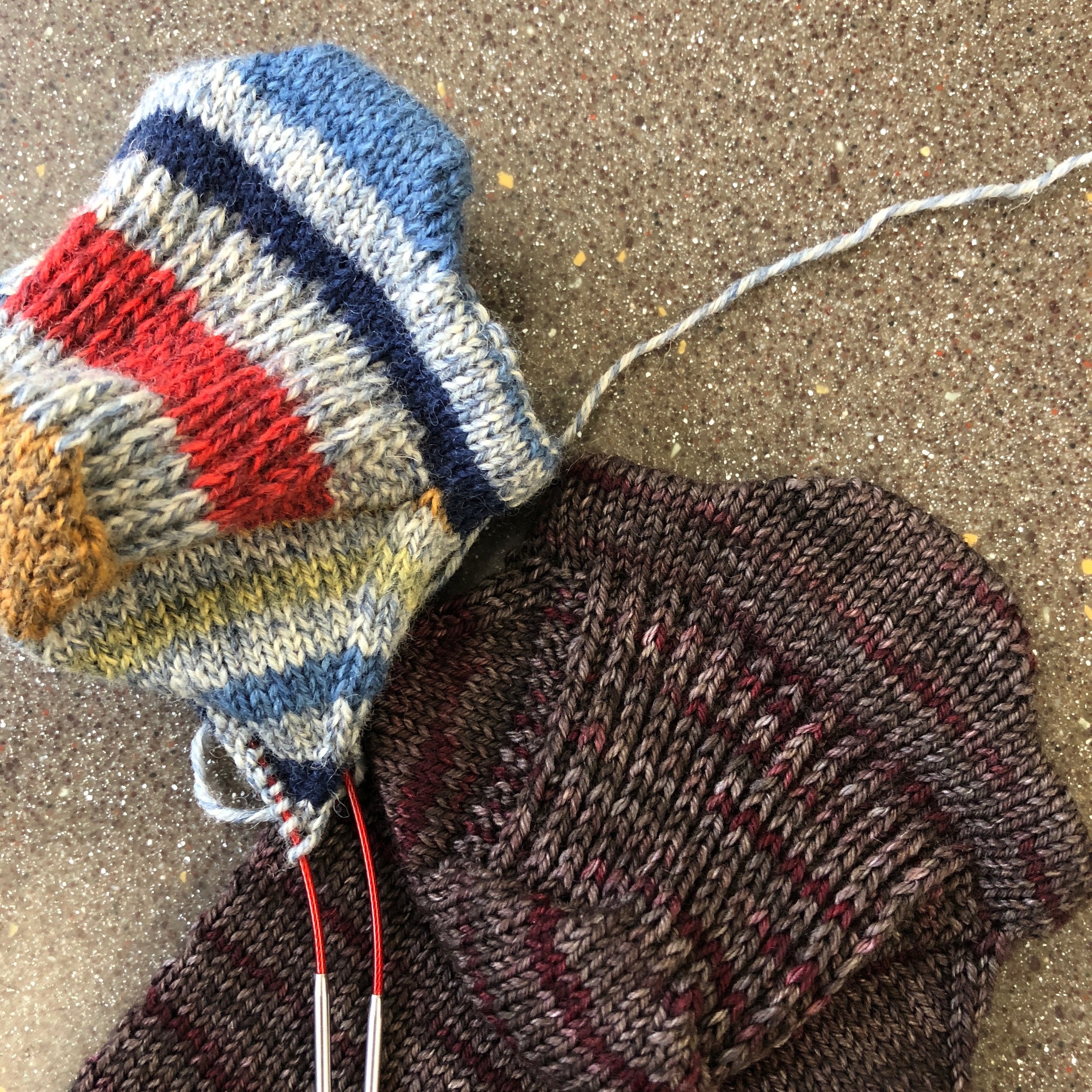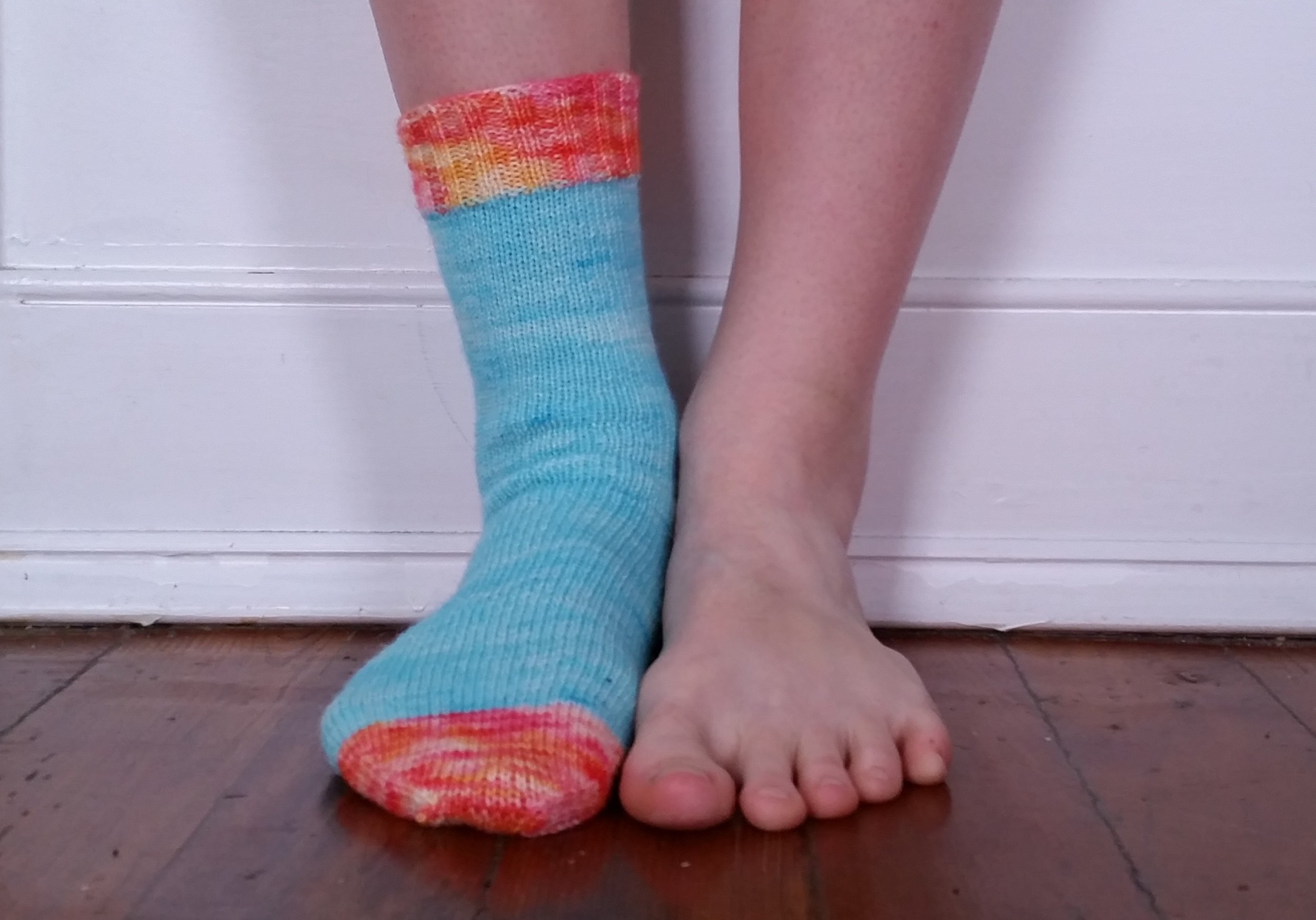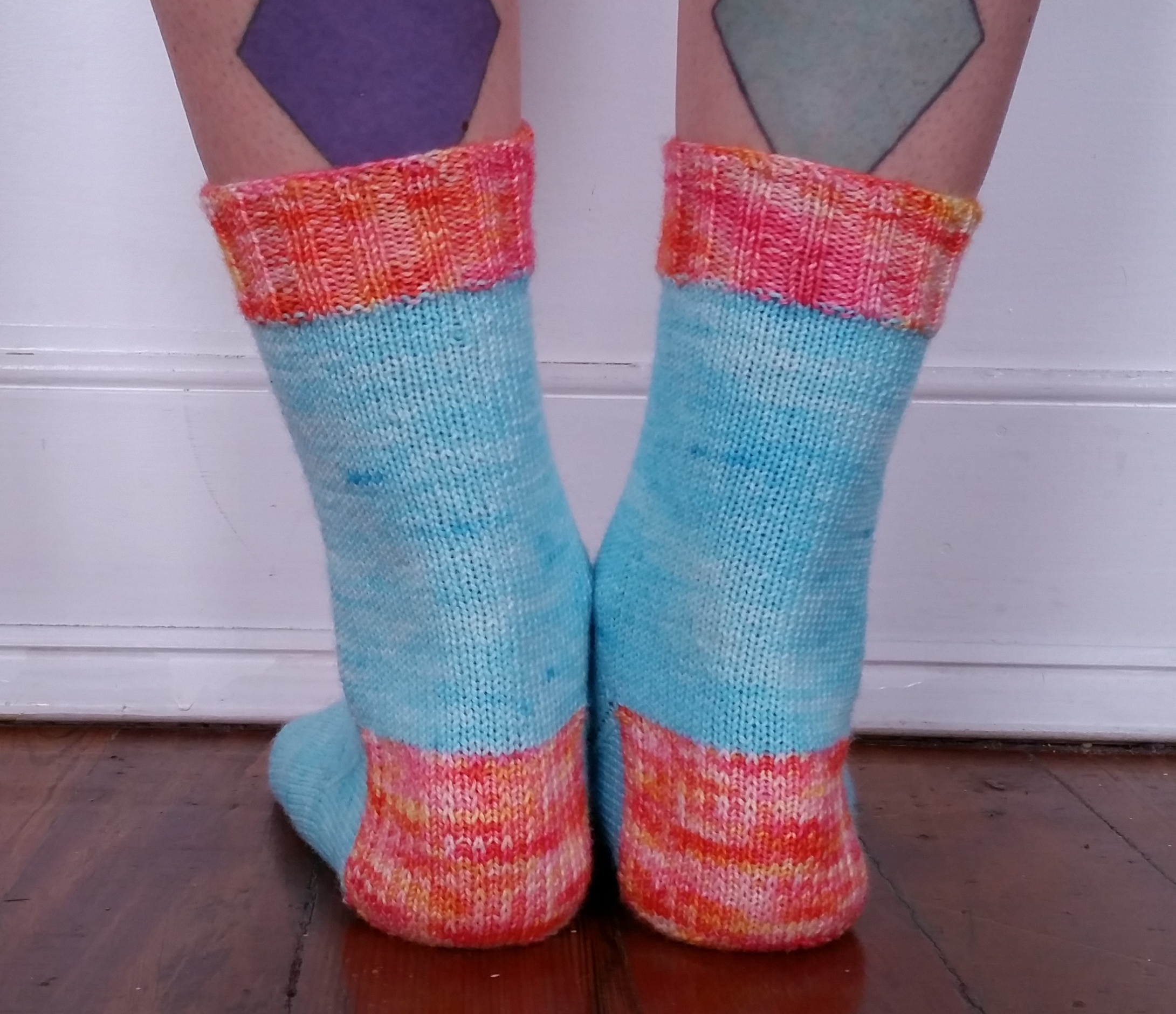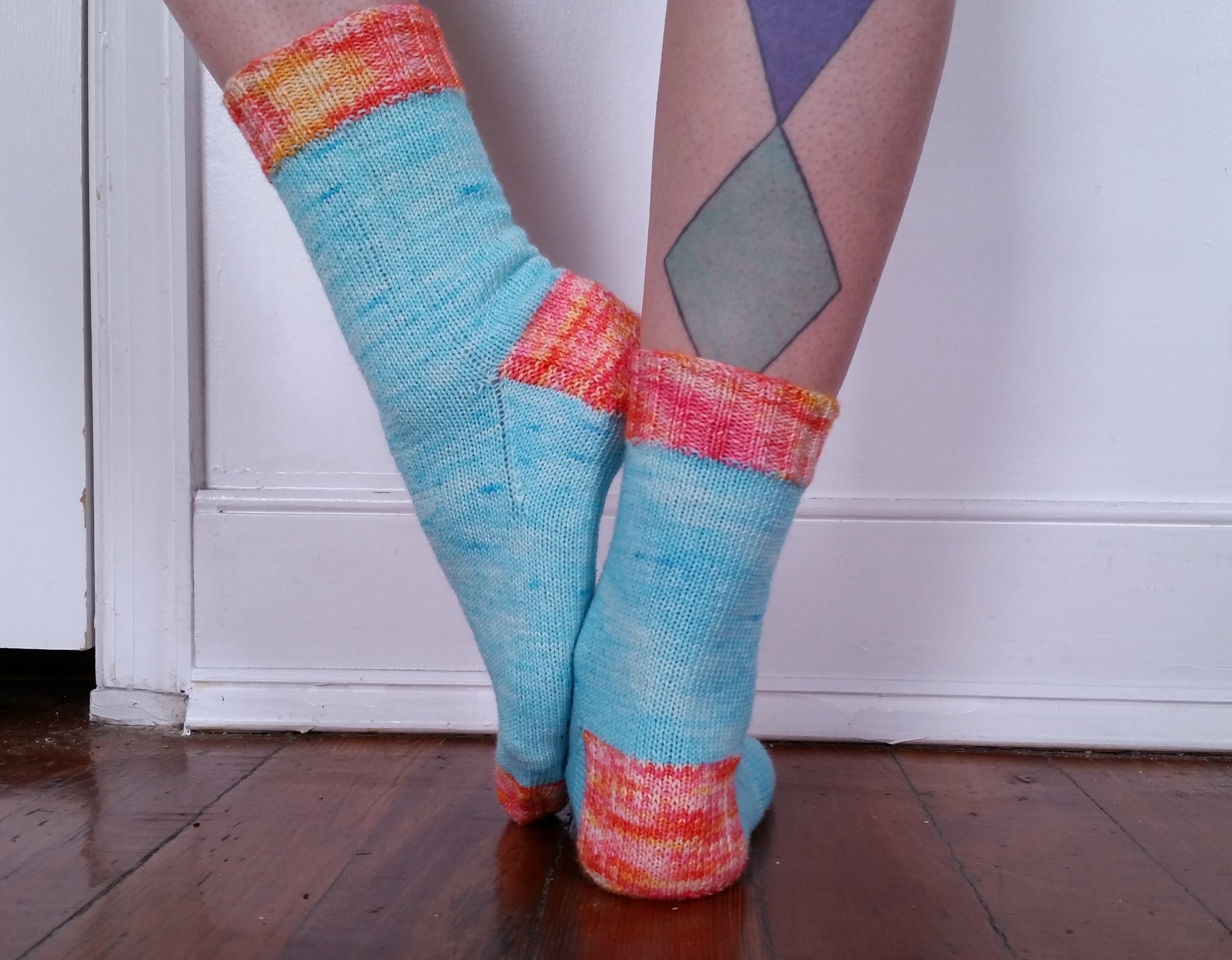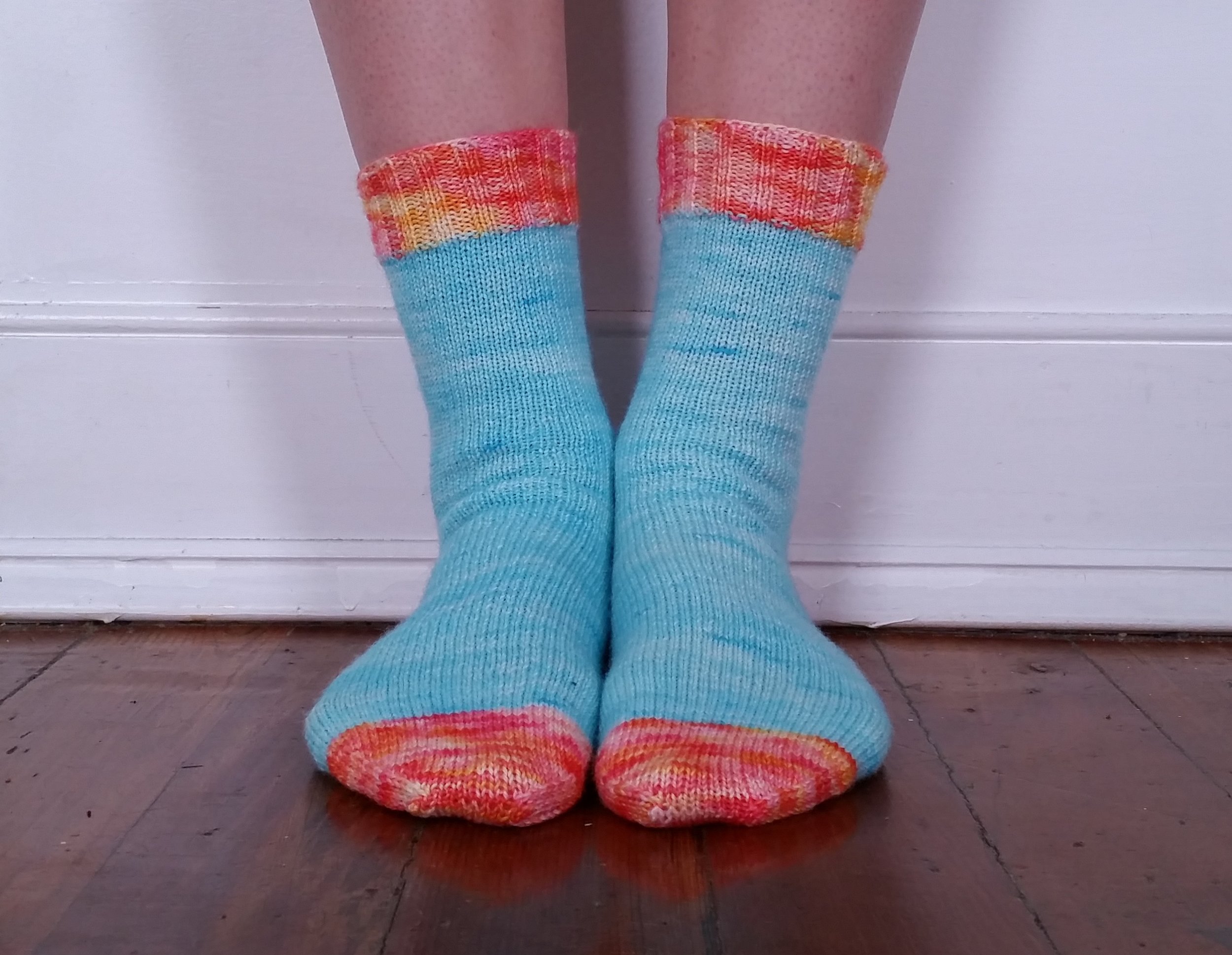I’m pretty sure I don’t need explain how handy it is to have a pattern for a basic ribbed hat. You can make it as sassy or reserved as you want with your choice of yarn and the stretch means that you won’t finish and then find out it won’t fit.
My problem is always the decreases. They never look as tidy as I want! (Between you and me, my ssk’s are always wonky, no matter what I do to make them pretty…)
In this hat, I think I have found the solution. You don’t need to learn any fancy stitches, since the decreases are still done with k2tog’s and ssk’s but the final product is flipped inside out and you hide any wonkyness away.
Click here to download a pdf of the pattern.
While this pattern is written for fingering weight yarn, you can easily adapt for other gauges:
Cast on must be a multiple of 16, so you could try 128 stitches with sport, 112 with DK, 96 with worsted, or 80 with bulky (since it's ribbed, shoot for a little too big rather than a little too small)
Setup row then becomes: [P1, work in established rib for (total stitch count)/4 - 2 stitches, P1, pm] three times then continue in established pattern to BOR marker - will have four markers total with (total stitch count)/4 stitches between them



